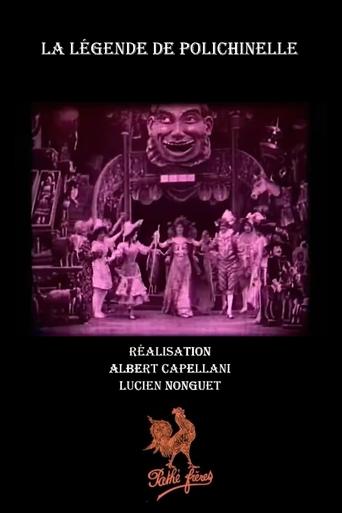Doomtomylo
a film so unique, intoxicating and bizarre that it not only demands another viewing, but is also forgivable as a satirical comedy where the jokes eventually take the back seat.
JoeytheBrit
There's not really much more to add to wmorrow59's excellent review of this oddity other than to confirm what he has written. Linder is barely recognisable, and the role is certainly at odds with the traditional conception of the man and his movies (who was the single biggest influence on Charlie Chaplin). The film is almost surreal and definitely bizarre. Given the brevity of explanatory titles, it assumes the viewer has some knowledge of the tale (which possibly nobody outside of Italy or France will). This being a Pathe film, the Pathe girls make an appearance during the film's final scenes to do their usual dance routine. Unfortunately, that adds a certain sameness to the film that is absent from the rest of the film. This one's a real curio, so give it seven minutes of your time if you get the opportunity.
wmorrow59
This film is currently available on video along with several short comedies also featuring its star, Max Linder, but The Legend of Ponchinella is an oddity which has nothing in common with the other selections besides his presence. Most of Linder's films were brief situation comedies focused on the frustrations of modern life, but 'Ponchinella' is a fantasy with supernatural elements, similar to the contemporaneous work of Georges Méliès, Ferdinand Zecca, and Segundo de Chomons. As the servant Ponchinella (also spelled "Polichinelle," and simplified to "Harlequin" in the English language version), Max takes the role of the clown figure from traditional Italian Commedia dell'arte. However, he is so heavily disguised and costumed that he is barely recognizable. Only in the last couple of scenes, when we get a glimpse of his distinctive profile, is there any certainty that this is Max Linder at all. But the identity of the actors is not of central importance here, for this is a fairy tale in which magic and spectacle are the primary attraction.On its own terms, and considering the period when it was made, 'Ponchinella' is interesting and impressive. It begins with exterior shots (tinted blue to suggest night) outside a genuine castle -- it's definitely not a painted flat in these scenes. Ponchinella the servant leads a procession of torch-wielding dwarfs to the castle, to rescue his lady from a gang of wicked aristocrats. Ponchinella's lady, whose name is not given, has been transformed into a mechanical doll, and dances in a robot-like fashion for the amusement of the "nobles." The dwarfs set the castle on fire and the terrified aristocrats flee, but the flames destroy the dancing doll. However, Ponchinella is able to reconstruct his lady from her dismembered pieces (which is just as disturbing to witness as it sounds) and in the end, as fairies arrive to celebrate, there is merriment and more dancing. This includes a quick glimpse of the famous "butterfly dance," so often performed for the cameras in the early days of the movies.The atmosphere is weird and dreamlike, even nightmarish. Although the film was apparently intended for children, the tone is similar to that of the "Little Nemo" cartoon strip Winsor McKay was creating at the time, i.e. dark and trippy. But I'm not complaining. As a rule, films made for children are bland and sentimental, so it's refreshing to find one as twisted and bizarre as the weirdest folk tale. Most kids love scary stories . . . and so do middle-aged movie buffs, on the look-out for something different.

